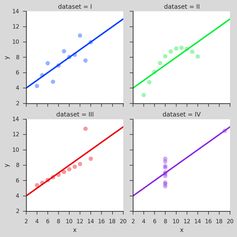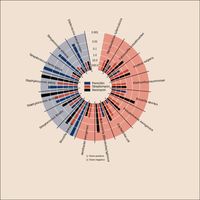- 【Python 第五篇章】数据类型
蜗牛 | ICU
Python专栏pythonwindows开发语言
一、列表详解list.append(x)在列表末尾添加一个元素。list.extend(iterable)用可迭代对象的元素扩展列表。list.insert(i,x)在指定位置插入元素,第一个参数是插入元素的索引,第二个是值。list.remove(x)从列表中删除第一个值为x的元素。list.pop([i])移除列表中给定位置的条目,并返回该条目。如果未指定索引号,则a.pop()将移除并返回列
- python catia catalog文件_Python封装的获取文件目录的函数
卢新生
pythoncatiacatalog文件
获取指定文件夹中文件的函数,网上学习时东拼西凑的结果。注意,其中文件名如1.txt,文件路径如D:\文件夹\1.txt;direct为第一层子级importos#filePath输入文件夹全路径#mode#1递归获取所有文件名;#2递归获取所有文件路径;#3获取direct文件名;#4获取direct文件路径;#5获取direct文件名和direct子文件夹名;#6获取direct文件路径和dir
- Python:每日一题之错误票据
努力的敲码工
蓝桥杯每日一题python蓝桥杯
题目描述某涉密单位下发了某种票据,并要在年终全部收回。每张票据有唯一的ID号。全年所有票据的ID号是连续的,但ID的开始数码是随机选定的。因为工作人员疏忽,在录入ID号的时候发生了一处错误,造成了某个ID断号,另外一个ID重号。你的任务是通过编程,找出断号的ID和重号的ID。假设断号不可能发生在最大和最小号。输入描述输入描述要求程序首先输入一个整数N(N<100)表示后面数据行数。接着读入N行数据
- Python控制批量插入Catia文件并修改文件定义及PN
一盘红烧肉
python
改了两天,总算初步摸清楚了Catia中的文件结构,实现了使用Python控制批量修改文件名及定义使用Pycatia在Product中插入Part并改名及定义
- PySide2是 Qt 库的 Python 绑定之一
WwwwwH_PLUS
#Qtqtpython开发语言
PySide2是Qt库的Python绑定之一,它为Python程序员提供了创建跨平台桌面应用程序的工具和功能。PySide2是Qt5.x系列的Python绑定,而Qt本身是一个跨平台的图形用户界面(GUI)框架,广泛用于开发各种类型的桌面应用程序,包括多种平台(Windows、Linux、macOS)的应用。主要特点跨平台支持:PySide2可以在Windows、Linux和macOS上运行,允许
- Python学习第十一天
Leo来编程
Python学习python
疑惑:有很多人不知道是不是也分不清什么是单核?什么是多核?什么是时间片?进程?线程?那么在讲进程和线程前我先举个例子更好理解这些概念。单核例子:比如你是一个厨师(计算机)在一个厨房(CPU)里需要同时做3个菜(进程)、每个菜需要准备不同的调料以及协作(线程),那么这个厨师需要不断地切换时间(时间片)来达到同时在一个时间将三个菜做完。多核的话其实对应的例子就是多个厨师,这样的例子太多了因为万物皆对象
- python学习第三天
Leo来编程
Python学习python开发语言
条件判断条件判断使用if、elif和else关键字。它们用于根据条件执行不同的代码块。#条件判断age=18ifage0:#也可以写if(s>0)但是没必要因为python给个提示建议去掉保证代码的按照缩进来进行更加规范print("这个数字是大于0的数字!")#这行代码属于if语句的代码块elifs==0:print("这个数字是等于0的数字!")#这行代码属于elif语句的代码块else:pr
- 三种优化算法
旅者时光
算法算法python开发语言
本文将总结遗传算法、粒子群算法、模拟退火三种优化算法的核心思路,并使用python完整实现。实际上,越来越多的优秀算法已经被封装为一个易用的接口。很多时候,一行代码就能实现我们的需求。但了解这些算法的基本逻辑,能够使用最基本的代码实现它。无论对于提升我们的编程能力还是解决问题的能力,都会大有裨益。甚至,改变我们思考问题的方式。1、遗传算法遗传算法,顾名思义,就是借鉴了生物通过遗传变异来逐渐适应环境
- 使用 Python 合并微信与支付宝账单,生成财务报告
python后端
最近用思源笔记记东西上瘾,突然想每个月存一份收支记录进去。但手动整理账单太麻烦了,支付宝导出一份CSV,微信又导出一份,格式还不一样,每次复制粘贴头都大。干脆写了个Python脚本一键处理,核心就干两件事:把俩平台的CSV账单合并到一起自动生成带分类表格的Markdown(直接拖进思源就能渲染)代码主要折腾了这些:支付宝账单前24行都是废话,直接skiprows=24跳过去,GBK编码差点让我栽跟
- Python Flask 在网页应用程序中处理错误和异常
dowhileprogramming
pythonflask开发语言
PythonFlask在网页应用程序中处理错误和异常PythonFlask在网页应用程序中处理错误和异常PythonFlask在网页应用程序中处理错误和异常在我们所有的代码示例中,我们没有注意如何处理用户在浏览器中输入错误的URL或向我们的应用程序发送错误的参数集的情况。这不是设计意图,但目的是首先关注网页应用程序的关键组件。网页框架的美妙之处在于,它们通常默认支持错误处理。如果发生任何错误,将自
- 农业生产模拟和农业政策分析:WOFOST模型与PCSE模型安装、运行、数据准备;农田农作物生长模拟和产量预测等
WangYan2022
作物模型农业WOFOST模型PCSE模型农田生态系统作物模型农业生产模拟
WOFOST(WorldFoodStudies)和PCSE(PythonCropSimulationEnvironment)是两个用于农业生产模拟的模型:WOFOST是一个经过多年开发和验证的模型,被广泛用于全球的农业生产模拟和农业政策分析;采用了模块化的结构,可以对不同的农作物和环境条件进行参数化和适应;WOFOST可用于长期模拟,能够模拟整个作物生长周期,包括播种、生长、收获等各个阶段;WOF
- 基于Python+Vue开发的电影订票管理系统源码+运行步骤
冷琴1996
Python系统设计pythonvue.js开发语言
项目简介该项目是基于Python+Vue开发的电影订票管理系统(前后端分离),这是一项为大学生课程设计作业而开发的项目。该系统旨在帮助大学生学习并掌握Python编程技能,同时锻炼他们的项目设计与开发能力。通过学习基于Python的电影订票管理系统项目,大学生可以在实践中学习和提升自己的能力,为以后的职业发展打下坚实基础。技术学习之路主要功能影片管理:管理系统可以录入、修改和查询影片的基本信息,如
- Python通过YOLO格式TXT标签文件在图像中画框
CHERISH_KDX
pythonYOLO人工智能
使用场景检测数据集标注是否有误:在目标检测算法中需要标注自己的数据集,为了更加方便的检查数据集标注是否有误,可以使用该工具将标注结果绘制在图像中并查看。美化识别结果中的检测框:在一些目标检测场景中,YOLO检测算法原始的检测框绘制会导致重叠、颜色冲突、字体过大等问题。可以使用该工具进行修改。代码importosimportcv2classcheck_label:def__init__(self,c
- 基于llama_cpp 调用本地模型(llama)实现基本推理
月光技术杂谈
大模型初探llamallama.cpppythonLLM集成显卡本地模型AI
零基础实践本地推理模型基本应用:基于llama_cpp的本地模型调用。本文先安装llama_cpppython库,再编写程序,利用其调用llama-2-7b-chat.Q4_K_M.ggu模型。背景llama_cpp是一个基于C++的高性能库(llama.cpp)的Python绑定,支持在CPU或GPU上高效运行LLaMA及其衍生模型(如LLaMA2),并通过量化技术(如GGUF格式)优化内存使用
- python实现查找满足条件的数字
qq_恰同学少年
python
问题:一个四位数,知道其前两位和后两位分别相等,并且这个数还是一个平方数,求出这个数。一个四位数,范围只能是1000~9999,前两位和后两位分别相等,也就是说,它的结构应该是aabb。最后,这个数是一个平方数。有的小伙伴可能不知道啥叫平方数,暂且解释下,所谓的平方数就是指该数等于一个整数的平方。比如3的平方是9,那么我们就说9是个平方数。第一步,这是个四位数,前两位和后两位分别相等,我们将满足条
- python中常用的内置模块举例(入门级整理)
qq_恰同学少年
python
python对于初学者可以说是十分友好的一门编程语言,不仅语法简单,而且它自身还包含了十分丰富的第三方模块,我仅就将我自己常用的一些内置模块(自带的,无需安装)做一下简单的总结和介绍:1.turtleturtle,是python中比较好玩一个模块,它有一个专有名称“海龟作图”,光看名字就应该能够猜到它是用来干嘛的,没错,就是来画图的,它可以通过某些语句来控制一个点在白板上的运动轨迹,它在白板上走过
- QPython双核攻略:从零基础到AI开发,你的手机就是全栈训练营
程之编
python开发语言青少年编程人工智能
主题一:《编程小白必看!在手机上种下你的第一行代码》✨北京优趣天下信息技术有限公司重磅出品我们比谁都清楚:✔️86%的初学者因环境配置放弃编程✔️72%的上班族只有碎片化学习时间✔️95%的自学者需要即时答疑支持为什么QPython成为2025现象级学习工具?▸全栈开发环境:解释器+编辑器+控制台三合一▸AI导师常驻:集成DeepSeek代码助手(支持中英双语提问)▸极速学习路径:Q派课程7天完成
- Python学习指南:系统化路径 + 避坑建议
程之编
Python全栈通关秘籍青少年编程python开发语言人工智能机器学习
新手小白学习编程就像搭积木——需要从基础开始,逐步构建知识体系。以下是为你量身定制的Python学习路径,帮你告别杂乱,高效入门!一、学习前的关键认知明确目标:想用Python做什么?数据分析(如Excel自动化、可视化)Web开发(如搭建网站)人工智能(如机器学习)自动化办公(如处理文件、邮件)目标不同,后续学习侧重点不同(但基础通用)。避免误区:❌只看教程不写代码✅边学边动手,哪怕抄代码也要运
- 【Python代码练习(简单应用)】
9...
python汇编前端开发语言dreamweaver
一、Python列表添加与删除元素:append()。在列表末尾添加新的格式元素添加格式:list.append(元素)删除格式:list.remove(元素)例如:#给出代码listA=['水煮千丝','平板豆腐','白烧饭','香菇青菜','西红柿鸡蛋汤']listA._________("红烧肉")listA._________("水煮千丝")print(listA)将“红烧肉”放入列表中,
- 统信uos20:利用docker部署python+jupyterlab开发环境
阆遤
dockerpythonjupytergithubactionsworkflow统信uos20
很多统信uos20计算机没有联网安装python开发环境的条件,但是工作中需要对数据进行分析处理,因而产生了离线部署python开发环境的想法。我首先下载了python3.11的源代码包,在uos中编译居然正常通过。但后续的麻烦来了:需要安装的库没法安装。尝试了一天,最终放弃。改用Docker方式部署,理由就不多解释了。一、在uos中安装docker。我的系统是uos20linux4.19.0-a
- 第五周作业——第十章动手试一试
hongsqi
10-1Python学习笔记学习笔记:在文本编辑器中新建一个文件,写几句话来总结一下你至此学到的Python知识,其中每一行都以“InPythonyoucan”打头。将这个文件命名为learning_python.txt,并将其存储到为完成本章练习而编写的程序所在的目录中。编写一个程序,它读取这个文件,并将你所写的内容打印三次:第一次打印时读取整个文件;第二次打印时遍历文件对象;第三次打印时将各行
- 统信UOS下达梦数据库启动图形界面应用工具monitor报JAVA相关错:An error has occurred. See the log file
LaoYuanPython
老猿Python国产信创之光java达梦数据库统信UOS操作系统JDK图形应用报错
☞░前往老猿Python博客░https://blog.csdn.net/LaoYuanPython一、前言在博文《基于飞腾2000CPU+浪潮电脑+统信UOS安装达梦数据库详解https://blog.csdn.net/LaoYuanPython/article/details/143258863》中介绍了基于飞腾2000CPU+浪潮电脑+统信UOS安装达梦数据库的详细过程,并且安装完毕之后通过
- 整理一下arcGis desktop版本软件, 从入门到精通需要学习的知识点
AnalogElectronic
arcgis学习
整理一下arcGisdesktop版本软件,从入门到精通需要学习的知识点以下是一份关于ArcGISDesktop从入门到精通的学习知识点整理:一、软件初认识与基础操作软件初认识:了解ArcGISDesktop的界面布局,包括内容列表、ArcToolbox工具箱、结果窗口、地图窗口、目录窗口、搜索窗口、python编程窗口以及其他常用工具条等。数据添加与管理:掌握通过不同方式添加数据,如图层列表右键
- 动态规划双剑合璧:C++与Python征服洛谷三大经典DP问题
三流搬砖艺术家
动态规划c++python
动态规划核心思想状态定义→转移方程→边界处理→时空优化本文精选洛谷动态规划题单中三大经典问题,通过C++与Python双语言对比实现,彻底掌握DP精髓!题目一:P1048采药(01背包模板)题目描述在限定时间T内采集草药,每株草药有采集时间time[i]和价值value[i],求最大总价值。解题思路状态定义:dp[j]表示时间j能获得的最大价值转移方程:dp[j]=max(dp[j],dp[j-t
- Python机器学习实战:构建序列到序列(Seq2Seq)模型处理翻译任务
AGI大模型与大数据研究院
程序员提升自我硅基计算碳基计算认知计算生物计算深度学习神经网络大数据AIGCAGILLMJavaPython架构设计Agent程序员实现财富自由
Python机器学习实战:构建序列到序列(Seq2Seq)模型处理翻译任务1.背景介绍1.1问题的由来翻译是跨语言沟通的重要桥梁,随着全球化进程的加速,翻译需求日益增长。传统的机器翻译方法主要依赖于规则和统计方法,如基于短语的翻译、基于统计的机器翻译等。然而,这些方法难以处理复杂的语言现象,翻译质量参差不齐。近年来,随着深度学习技术的快速发展,基于神经网络序列到序列(Sequence-to-Seq
- 20个简单的python代码练习
qq_恰同学少年
python开发语言
下面整理了20个简单的python代码练习,供大家学习交流使用,轻易上手,复制下来就能用!!!废话不多说,直奔主题1.输入一个不超过5位的正整数,输出其逆数。例如输入12345,输出应为54321。a=input('请输入一个不超过5位的正整数:')print('其逆数为:',a[::-1])注:该代码使用了列表的切片和反转操作,首先将这个数的每个位上的数字存储到一个列表中,然后通过列表的反转来得
- Python第十六课:深度学习入门 | 神经网络解密
程之编
Python全栈通关秘籍python神经网络青少年编程
本节目标理解生物神经元与人工神经网络的映射关系掌握激活函数与损失函数的核心作用使用Keras构建手写数字识别模型可视化神经网络的训练过程掌握防止过拟合的基础策略一、神经网络基础(大脑的数字化仿生)1.神经元对比生物神经元人工神经元树突接收信号输入层接收特征数据细胞体整合信号加权求和(∑(权重×输入)+偏置)轴突传递电信号激活函数处理输出2.核心组件解析激活函数:神经元的"开关"(如ReLU:max
- 通过 Ollama 本地部署 DeepSeek-r1:1.5b 模型后,用 Python 调用推理并生成基于 pytest + PO 设计模式的 Playwright 自动化测试文件
Python测试之道
测试提效pythonpythonpytest设计模式
以下是完整的实现步骤和代码示例,详细说明了如何通过Python调用本地部署的DeepSeek-r1:1.5b模型,将功能测试用例转换为适合pytest和PageObject(PO)设计模式的Playwright自动化测试脚本。一、前提条件DeepSeek模型本地部署通过Ollama部署DeepSeek-r1:1.5b模型。Ollama提供的本地推理服务默认可通过HTTPAPI访问,地址通常为:ht
- 【UI自动化】Selenium库中使用By类元素定位方法
搞不来测试的摄影狮
软件测试pythonselenium自动化
使用By类,首先需要在Python中导入该模块:fromselenium.webdriver.common.byimportBy1.通过元素的ID属性来定位driver.find_element(By.ID,'kw')如下图,我们需要定位百度的输入框。首先选中定位工具,然后选中输入框。我们可以看到该元素id的值为:"kw"2.通过元素的NAME属性来定位driver.find_element(By
- DeepSeek + Cline:编程如何加速引擎
meisongqing
人工智能
DeepSeek与Cline的结合为编程工作流提供了显著的加速能力,这种组合通过AI辅助规划、代码生成与优化、实时调试等功能,大幅提升开发效率。以下是具体实现方式及技术要点:一、智能规划与代码生成问题分析与规划(Plan模式)DeepSeek-R1模型擅长处理复杂逻辑推理,开发者可在Cline的Plan模式下用自然语言描述需求(如“用Python实现数据清洗并计算平均值”)。DeepSeek会根据
- ztree异步加载
3213213333332132
JavaScriptAjaxjsonWebztree
相信新手用ztree的时候,对异步加载会有些困惑,我开始的时候也是看了API花了些时间才搞定了异步加载,在这里分享给大家。
我后台代码生成的是json格式的数据,数据大家按各自的需求生成,这里只给出前端的代码。
设置setting,这里只关注async属性的配置
var setting = {
//异步加载配置
- thirft rpc 具体调用流程
BlueSkator
中间件rpcthrift
Thrift调用过程中,Thrift客户端和服务器之间主要用到传输层类、协议层类和处理类三个主要的核心类,这三个类的相互协作共同完成rpc的整个调用过程。在调用过程中将按照以下顺序进行协同工作:
(1) 将客户端程序调用的函数名和参数传递给协议层(TProtocol),协议
- 异或运算推导, 交换数据
dcj3sjt126com
PHP异或^
/*
* 5 0101
* 9 1010
*
* 5 ^ 5
* 0101
* 0101
* -----
* 0000
* 得出第一个规律: 相同的数进行异或, 结果是0
*
* 9 ^ 5 ^ 6
* 1010
* 0101
* ----
* 1111
*
* 1111
* 0110
* ----
* 1001
- 事件源对象
周华华
JavaScript
<!DOCTYPE html PUBLIC "-//W3C//DTD XHTML 1.0 Transitional//EN" "http://www.w3.org/TR/xhtml1/DTD/xhtml1-transitional.dtd">
<html xmlns="http://www.w3.org/1999/xhtml&q
- MySql配置及相关命令
g21121
mysql
MySQL安装完毕后我们需要对它进行一些设置及性能优化,主要包括字符集设置,启动设置,连接优化,表优化,分区优化等等。
一 修改MySQL密码及用户
- [简单]poi删除excel 2007超链接
53873039oycg
Excel
采用解析sheet.xml方式删除超链接,缺点是要打开文件2次,代码如下:
public void removeExcel2007AllHyperLink(String filePath) throws Exception {
OPCPackage ocPkg = OPCPac
- Struts2添加 open flash chart
云端月影
准备以下开源项目:
1. Struts 2.1.6
2. Open Flash Chart 2 Version 2 Lug Wyrm Charmer (28th, July 2009)
3. jofc2,这东西不知道是没做好还是什么意思,好像和ofc2不怎么匹配,最好下源码,有什么问题直接改。
4. log4j
用eclipse新建动态网站,取名OFC2Demo,将Struts2 l
- spring包详解
aijuans
spring
下载的spring包中文件及各种包众多,在项目中往往只有部分是我们必须的,如果不清楚什么时候需要什么包的话,看看下面就知道了。 aspectj目录下是在Spring框架下使用aspectj的源代码和测试程序文件。Aspectj是java最早的提供AOP的应用框架。 dist 目录下是Spring 的发布包,关于发布包下面会详细进行说明。 docs&nb
- 网站推广之seo概念
antonyup_2006
算法Web应用服务器搜索引擎Google
持续开发一年多的b2c网站终于在08年10月23日上线了。作为开发人员的我在修改bug的同时,准备了解下网站的推广分析策略。
所谓网站推广,目的在于让尽可能多的潜在用户了解并访问网站,通过网站获得有关产品和服务等信息,为最终形成购买决策提供支持。
网站推广策略有很多,seo,email,adv
- 单例模式,sql注入,序列
百合不是茶
单例模式序列sql注入预编译
序列在前面写过有关的博客,也有过总结,但是今天在做一个JDBC操作数据库的相关内容时 需要使用序列创建一个自增长的字段 居然不会了,所以将序列写在本篇的前面
1,序列是一个保存数据连续的增长的一种方式;
序列的创建;
CREATE SEQUENCE seq_pro
2 INCREMENT BY 1 -- 每次加几个
3
- Mockito单元测试实例
bijian1013
单元测试mockito
Mockito单元测试实例:
public class SettingServiceTest {
private List<PersonDTO> personList = new ArrayList<PersonDTO>();
@InjectMocks
private SettingPojoService settin
- 精通Oracle10编程SQL(9)使用游标
bijian1013
oracle数据库plsql
/*
*使用游标
*/
--显示游标
--在显式游标中使用FETCH...INTO语句
DECLARE
CURSOR emp_cursor is
select ename,sal from emp where deptno=1;
v_ename emp.ename%TYPE;
v_sal emp.sal%TYPE;
begin
ope
- 【Java语言】动态代理
bit1129
java语言
JDK接口动态代理
JDK自带的动态代理通过动态的根据接口生成字节码(实现接口的一个具体类)的方式,为接口的实现类提供代理。被代理的对象和代理对象通过InvocationHandler建立关联
package com.tom;
import com.tom.model.User;
import com.tom.service.IUserService;
- Java通信之URL通信基础
白糖_
javajdkwebservice网络协议ITeye
java对网络通信以及提供了比较全面的jdk支持,java.net包能让程序员直接在程序中实现网络通信。
在技术日新月异的现在,我们能通过很多方式实现数据通信,比如webservice、url通信、socket通信等等,今天简单介绍下URL通信。
学习准备:建议首先学习java的IO基础知识
URL是统一资源定位器的简写,URL可以访问Internet和www,可以通过url
- 博弈Java讲义 - Java线程同步 (1)
boyitech
java多线程同步锁
在并发编程中经常会碰到多个执行线程共享资源的问题。例如多个线程同时读写文件,共用数据库连接,全局的计数器等。如果不处理好多线程之间的同步问题很容易引起状态不一致或者其他的错误。
同步不仅可以阻止一个线程看到对象处于不一致的状态,它还可以保证进入同步方法或者块的每个线程,都看到由同一锁保护的之前所有的修改结果。处理同步的关键就是要正确的识别临界条件(cri
- java-给定字符串,删除开始和结尾处的空格,并将中间的多个连续的空格合并成一个。
bylijinnan
java
public class DeleteExtraSpace {
/**
* 题目:给定字符串,删除开始和结尾处的空格,并将中间的多个连续的空格合并成一个。
* 方法1.用已有的String类的trim和replaceAll方法
* 方法2.全部用正则表达式,这个我不熟
* 方法3.“重新发明轮子”,从头遍历一次
*/
public static v
- An error has occurred.See the log file错误解决!
Kai_Ge
MyEclipse
今天早上打开MyEclipse时,自动关闭!弹出An error has occurred.See the log file错误提示!
很郁闷昨天启动和关闭还好着!!!打开几次依然报此错误,确定不是眼花了!
打开日志文件!找到当日错误文件内容:
--------------------------------------------------------------------------
- [矿业与工业]修建一个空间矿床开采站要多少钱?
comsci
地球上的钛金属矿藏已经接近枯竭...........
我们在冥王星的一颗卫星上面发现一些具有开采价值的矿床.....
那么,现在要编制一个预算,提交给财政部门..
- 解析Google Map Routes
dai_lm
google api
为了获得从A点到B点的路劲,经常会使用Google提供的API,例如
[url]
http://maps.googleapis.com/maps/api/directions/json?origin=40.7144,-74.0060&destination=47.6063,-122.3204&sensor=false
[/url]
从返回的结果上,大致可以了解应该怎么走,但
- SQL还有多少“理所应当”?
datamachine
sql
转贴存档,原帖地址:http://blog.chinaunix.net/uid-29242841-id-3968998.html、http://blog.chinaunix.net/uid-29242841-id-3971046.html!
------------------------------------华丽的分割线--------------------------------
- Yii使用Ajax验证时,如何设置某些字段不需要验证
dcj3sjt126com
Ajaxyii
经常像你注册页面,你可能非常希望只需要Ajax去验证用户名和Email,而不需要使用Ajax再去验证密码,默认如果你使用Yii 内置的ajax验证Form,例如:
$form=$this->beginWidget('CActiveForm', array( 'id'=>'usuario-form',&
- 使用git同步网站代码
dcj3sjt126com
crontabgit
转自:http://ued.ctrip.com/blog/?p=3646?tn=gongxinjun.com
管理一网站,最开始使用的虚拟空间,采用提供商支持的ftp上传网站文件,后换用vps,vps可以自己搭建ftp的,但是懒得搞,直接使用scp传输文件到服务器,现在需要更新文件到服务器,使用scp真的很烦。发现本人就职的公司,采用的git+rsync的方式来管理、同步代码,遂
- sql基本操作
蕃薯耀
sqlsql基本操作sql常用操作
sql基本操作
>>>>>>>>>>>>>>>>>>>>>>>>>>>>>>>>>>>>
蕃薯耀 2015年6月1日 17:30:33 星期一
&
- Spring4+Hibernate4+Atomikos3.3多数据源事务管理
hanqunfeng
Hibernate4
Spring3+后不再对JTOM提供支持,所以可以改用Atomikos管理多数据源事务。Spring2.5+Hibernate3+JTOM参考:http://hanqunfeng.iteye.com/blog/1554251Atomikos官网网站:http://www.atomikos.com/ 一.pom.xml
<dependency>
<
- jquery中两个值得注意的方法one()和trigger()方法
jackyrong
trigger
在jquery中,有两个值得注意但容易忽视的方法,分别是one()方法和trigger()方法,这是从国内作者<<jquery权威指南》一书中看到不错的介绍
1) one方法
one方法的功能是让所选定的元素绑定一个仅触发一次的处理函数,格式为
one(type,${data},fn)
&nb
- 拿工资不仅仅是让你写代码的
lampcy
工作面试咨询
这是我对团队每个新进员工说的第一件事情。这句话的意思是,我并不关心你是如何快速完成任务的,哪怕代码很差,只要它像救生艇通气门一样管用就行。这句话也是我最喜欢的座右铭之一。
这个说法其实很合理:我们的工作是思考客户提出的问题,然后制定解决方案。思考第一,代码第二,公司请我们的最终目的不是写代码,而是想出解决方案。
话粗理不粗。
付你薪水不是让你来思考的,也不是让你来写代码的,你的目的是交付产品
- 架构师之对象操作----------对象的效率复制和判断是否全为空
nannan408
架构师
1.前言。
如题。
2.代码。
(1)对象的复制,比spring的beanCopier在大并发下效率要高,利用net.sf.cglib.beans.BeanCopier
Src src=new Src();
BeanCopier beanCopier = BeanCopier.create(Src.class, Des.class, false);
- ajax 被缓存的解决方案
Rainbow702
JavaScriptjqueryAjaxcache缓存
使用jquery的ajax来发送请求进行局部刷新画面,各位可能都做过。
今天碰到一个奇怪的现象,就是,同一个ajax请求,在chrome中,不论发送多少次,都可以发送至服务器端,而不会被缓存。但是,换成在IE下的时候,发现,同一个ajax请求,会发生被缓存的情况,只有第一次才会被发送至服务器端,之后的不会再被发送。郁闷。
解决方法如下:
① 直接使用 JQuery提供的 “cache”参数,
- 修改date.toLocaleString()的警告
tntxia
String
我们在写程序的时候,经常要查看时间,所以我们经常会用到date.toLocaleString(),但是date.toLocaleString()是一个过时 的API,代替的方法如下:
package com.tntxia.htmlmaker.util;
import java.text.SimpleDateFormat;
import java.util.
- 项目完成后的小总结
xiaomiya
js总结项目
项目完成了,突然想做个总结但是有点无从下手了。
做之前对于客户端给的接口很模式。然而定义好了格式要求就如此的愉快了。
先说说项目主要实现的功能吧
1,按键精灵
2,获取行情数据
3,各种input输入条件判断
4,发送数据(有json格式和string格式)
5,获取预警条件列表和预警结果列表,
6,排序,
7,预警结果分页获取
8,导出文件(excel,text等)
9,修

